REVIEW: Alice in Wonderland at Bad Hats Theatre/Soulpepper
Get ready to smile, laugh, and weep gently (or, if you’re like me, full-out cry), because Alice in Wonderland is bringing it all, just in time for the holidays. Chock-full of jokes, nostalgia, and wildly impressive multi-disciplinary performances, I felt like a kid again sitting in the theatre, and I’m sure I wasn’t alone.
The Bad Hats Theatre team’s choice to present the piece in an alleyway formation (two audience banks facing each other across a runway-like stage) in Soulpepper’s Michael Young Theatre could not have a better payoff. The team’s intention was to allow audiences to witness children — and children at heart — experiencing magic, and the result is incredible. The production isn’t by any means an immersive one, but it was quite gratifying to occasionally catch a glimpse of someone in the audience bank on the opposite side of the stage and realize, “cool, I’m not the only person crying right now.”
This is a show about leaving childhood behind, and it hit me right in the feels. Starting in a modern-day Canadian classroom, the production introduces Alice, a curious young girl with a penchant for asking questions and finding the magic in the mundane. She’s surrounded by her classmates, who commiserate over the last question on their homework assignment: “what will you be when you grow up”?
A question we’ve all considered in the transition from childhood to adulthood, which sets the tone for the rest of the production. Alice is a girl stuck between two worlds, not entirely sure how to reconcile who she is with what she is becoming.
The opening of the production is light and fun: as a youth acting coach, I could definitely relate to Matt Pilipiak’s Mr. C as he tried to reign in a class of comedic characters. The jokes come hard and fast, creating a “real world” that is just as fun for the audience as Alice’s daydreams. But the magic really begins when Richard Lam strikes the first few keys on the keyboard, whisking the audience, and Alice, off to Wonderland with a jaunty tune.
Alice in Wonderland is a musical designed for audiences of all ages. The fine folks at Bad Hats Theatre don’t hold back, nor is the production, directed by Sue Miner, overly simple, “cutesy,” or overwhelmed with bright colours: the songs, devised by Victor Pokinko and Landon Doak, are complex and catchy. If you don’t know the chorus at the beginning of the number, you can definitely start to sing along by the end. The choreography is fast-paced and intricate, something that wouldn’t be out of place on a Broadway stage. And the colours… well, yeah, there are a lot of bright colours, but we’re in Wonderland, so it’s sort of obligatory.
The cast of nine perform all of the instrumentals and singing and the vast majority of sound effects on stage in real time. A piano at one end of the stage becomes a set piece in both the classroom and throughout Wonderland, while other instruments — a clarinet, melodica, bass guitar, and cajon, among others — whirl on and offstage seamlessly. Watching the songs and sounds come to life before our eyes only adds to the whimsy and magic of the production, and the musical abilities of the entire cst is as impressive as it is fun.
Each of the performances is wildly entertaining, but also surprisingly nuanced. Tess Benger, the titular Alice, is a marvel. Watching her hop, skip, and jump across the stage, it never feels as though she is an adult playing a child: instead, she’s a living, breathing depiction of childlike wonder, without a trace of baby voice, overly slow speech, or any of the clichéd tropes used to portray young people. Instead, Benger seemed to fully embrace impulse in a way that only children can, without the distraction of trying to “play young.”
Doak and Fiona Sauder, the latter of whom adapted the show, are an absolute delight in their multitude of duo roles. Together, they play the March Hare and Mad Hatter, supposed siblings (Cousins? Best friends? Weird kids that always dress the same?) Tod and Todd, and, my personal favourites, Tweedle-Dee and Tweedle-Dum. Sauder’s comedic timing is consistently on point throughout the production — their brief turn as the eight of hearts left the opening night audience howling — and they whiz around the stage on a wheel-mounted cajon through multiple songs without missing a beat. Meanwhile, Doak, who takes on the lion’s share of the bass-playing, maintains an earnestness in their portrayal of Tweedle-Dum that is as entertaining as it is endearing.
Vanessa Sears absolutely slays as the Red Queen: all of the her numbers are showstoppers, and the audience seemed ready to jump to their feet with every belted note and vocal run. Singing chops aside, her portrayal of the class try-hard Ruby is perfect — she’s never obnoxious, and I’m sure every teacher in the audience has taught that student before. Meanwhile, her Red Queen is high-energy and conniving without ever feeling like a villainous stereotype.
Lam, Breton Lalama, and Jessica Gallant each play a variety of characters who are distinguishable even without their costumes. Lam’s Douggie, one of the children in Alice’s classroom, is hilariously dense, his Dodo is a wonderfully tongue-in-cheek commentary on today’s politicians, and his instrumental ability is breathtaking. Lalama’s characters all carry an admirable level of sass, which peaks in their portrayal of Buttercup, filled with eyerolls and attitude. “Buttercup, PLEASE,” has been stuck in my head for days. And Gallant’s Unicorn is a simple yet nuanced portrayal of childhood innocence and imagination in a scene that had many eyes watering in the theatre.
Aisha Jarvis’ Cheshire Cat is a steady, calming presence throughout the production, skillfully bringing the audience back into a place of calm between the organized, hilarious chaos of each scene. It’s a difficult role — sort of the “straight man” of the play — but Jarvis infuses the character with a charm and array of micro-expressions and movements that lent her performance a lasting impact.
Finally, Pilipiak takes on the duo roles of Mr. C. and the White Rabbit in a star-making performance. It’s hard to stand out in this powerhouse cast, but somehow, his White Rabbit steals the show. It’s not just that they have good lines, it’s the way they say them, the way they stand, the way they bustle and bluster and boss Alice around. Pure magic. I could have watched him for hours.
The production is only 90 minutes long with no intermission, which is excellent for the adults in the audience. There were some restless kids in the crowd towards the 75-minute mark, and a few parents had to duck out briefly with their little ones, but most of the children seemed to be okay throughout the show.
The entire set is mounted on wheels, allowing the performers to transform the space in every scene. Classroom desks become trains and seats, while the chairs help Alice grow to her 50-foot size. Wooden window frames extend and separate to create walls, hallways, windows, and doors, without ever inhibiting the audience’s view. And the props are true to the concept of a classroom: Alice’ growth potion is a simple juice box, and a plate of raspberry tarts are a vibrant addition to each of the queen’s scenes.
(A quick shoutout to Pilipiak and Lam for one of the greatest — possibly the only — Kobe moments I’ve witnessed on a stage, in which Pilipiak threw a giant, inflatable raspberry costume through the air towards Lam. Rather than catching it with his hands, Lam somehow managed to catch it by ducking low, raising his arms, and sliding into the costume, mid-flight. From the rest of the cast’s facial expressions, it was a first for the production, and the audience went absolutely NUTS.)
I think it’s pretty clear that I thoroughly enjoyed myself at this production, but if I had one complaint — one tiny, incredibly nitpicky complaint — it would be that I wish Alice had been in a different colour. Benger certainly looked the part, in her overalls and matching headband over a white t-shirt, but I found that her predominantly red outfit was a little too close in hue to the Red Queen’s ruby costume. It wasn’t enough to make me question whether what I was watching was Alice in Wonderland, but I couldn’t help but notice the little girl who came to the show in her blue Disney Alice costume, and think about others who might do the same.
I went into Alice in Wonderland with high expectations. After all, it’s hard not to develop any presuppositions after interviewing the show’s creators about their vision and process. But the second installation in Bad Hats’ trilogy of plays not only met my expectations: it far surpassed them.
“There’s nothing like witnessing a child experiencing magic.”
Pokinko’s words from our interview kept running through my mind as I saw a small child in a pink dress with matching tights sitting in the front row opposite me slide quietly off her chair. Her head barely clearing the seat, she raised her arms in the air, swaying gently along with the larger-than-life flowers onstage as they sang their ballad, lulling an unsuspecting Alice to sleep.
This is what this show is all about.
Bad Hats Theatre’s Alice in Wonderland has an extended run at Soulpepper December 10, 2022 through January 7, 2023.


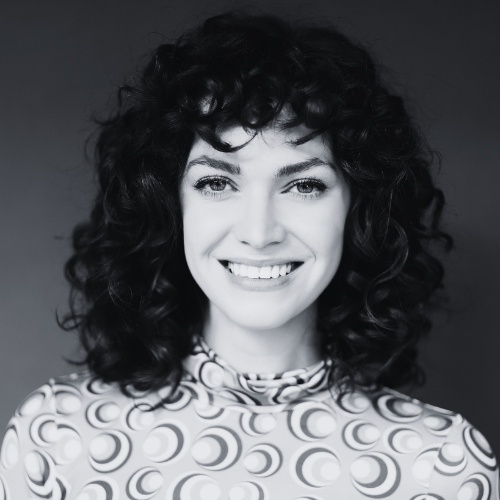






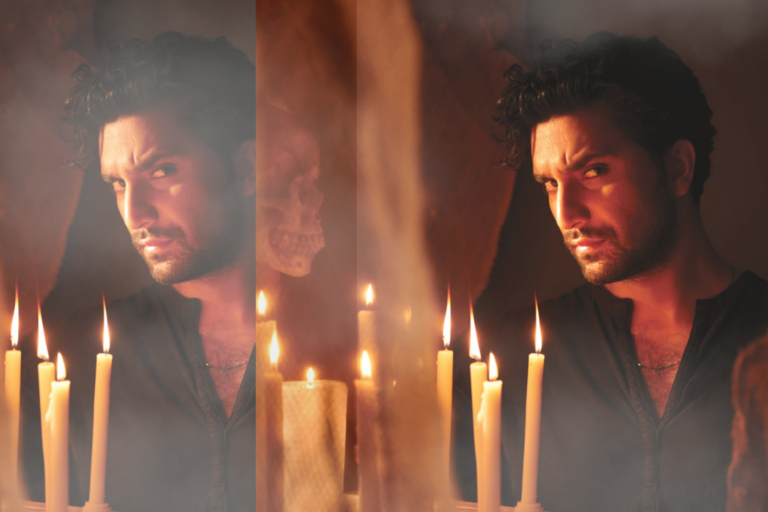

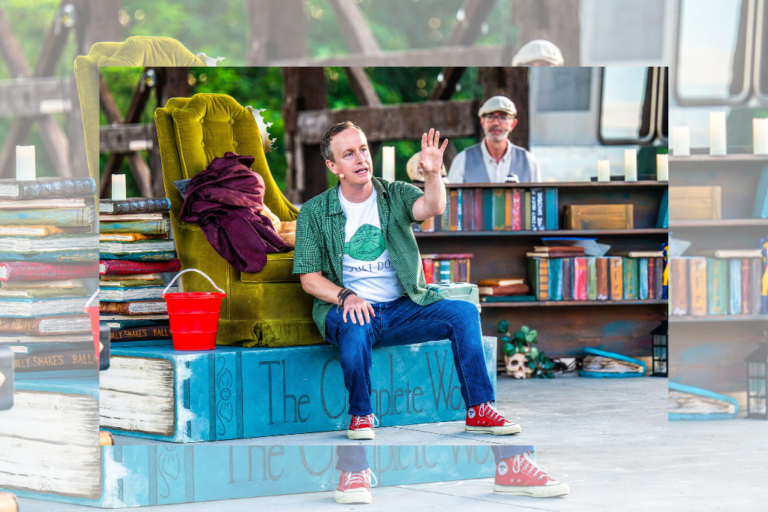
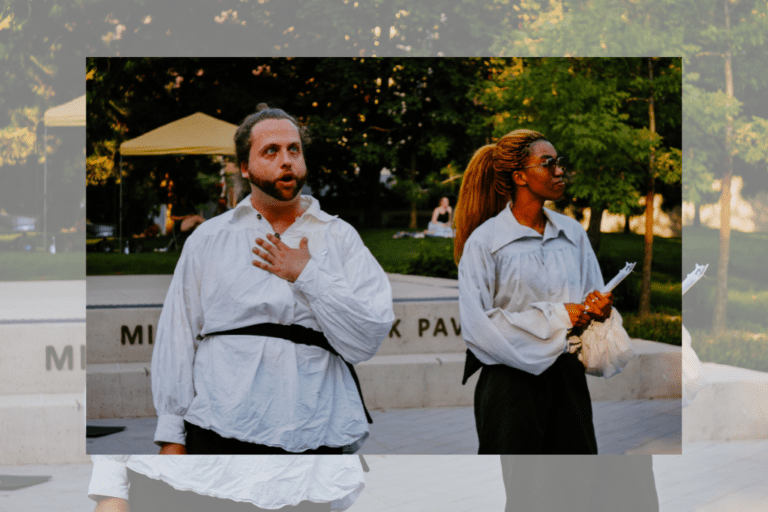
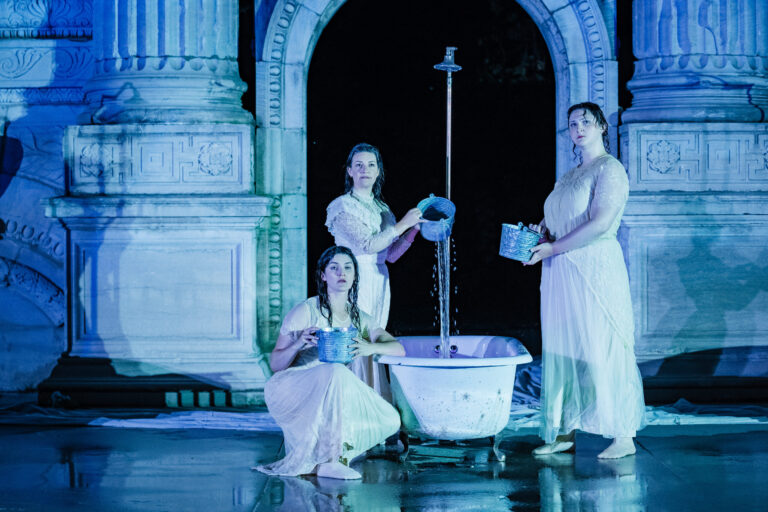
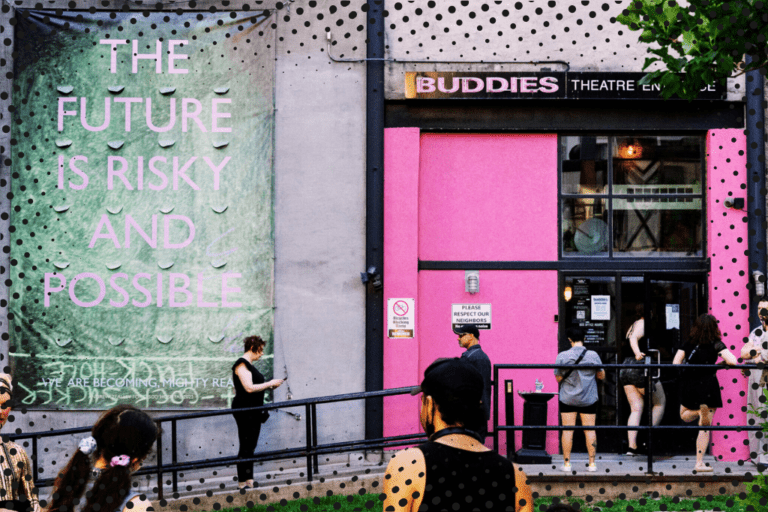
Comments